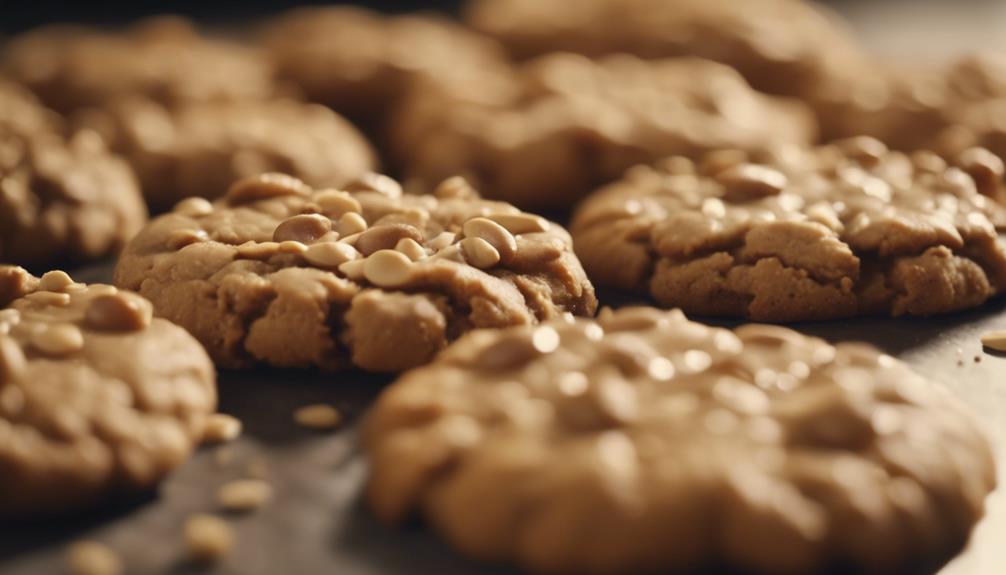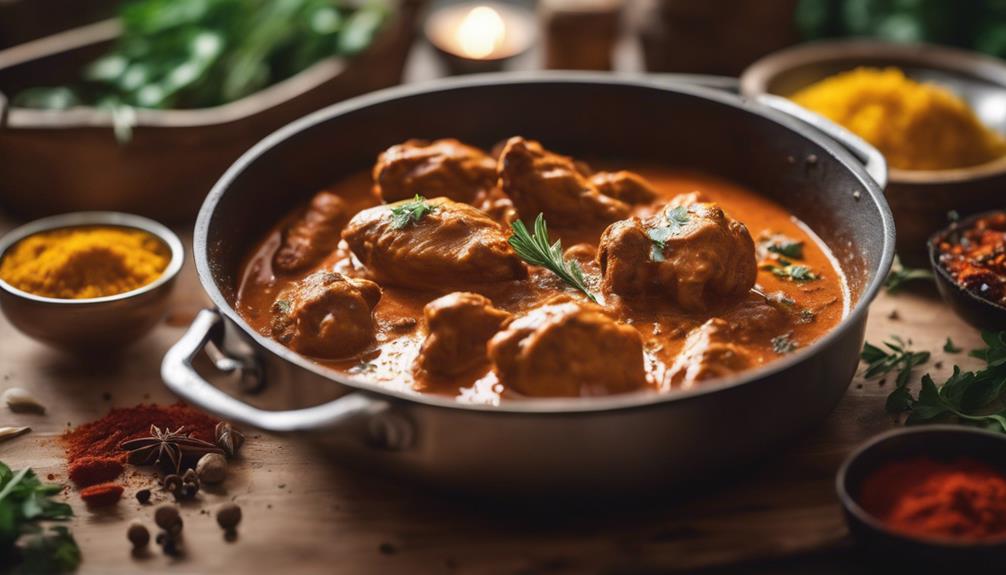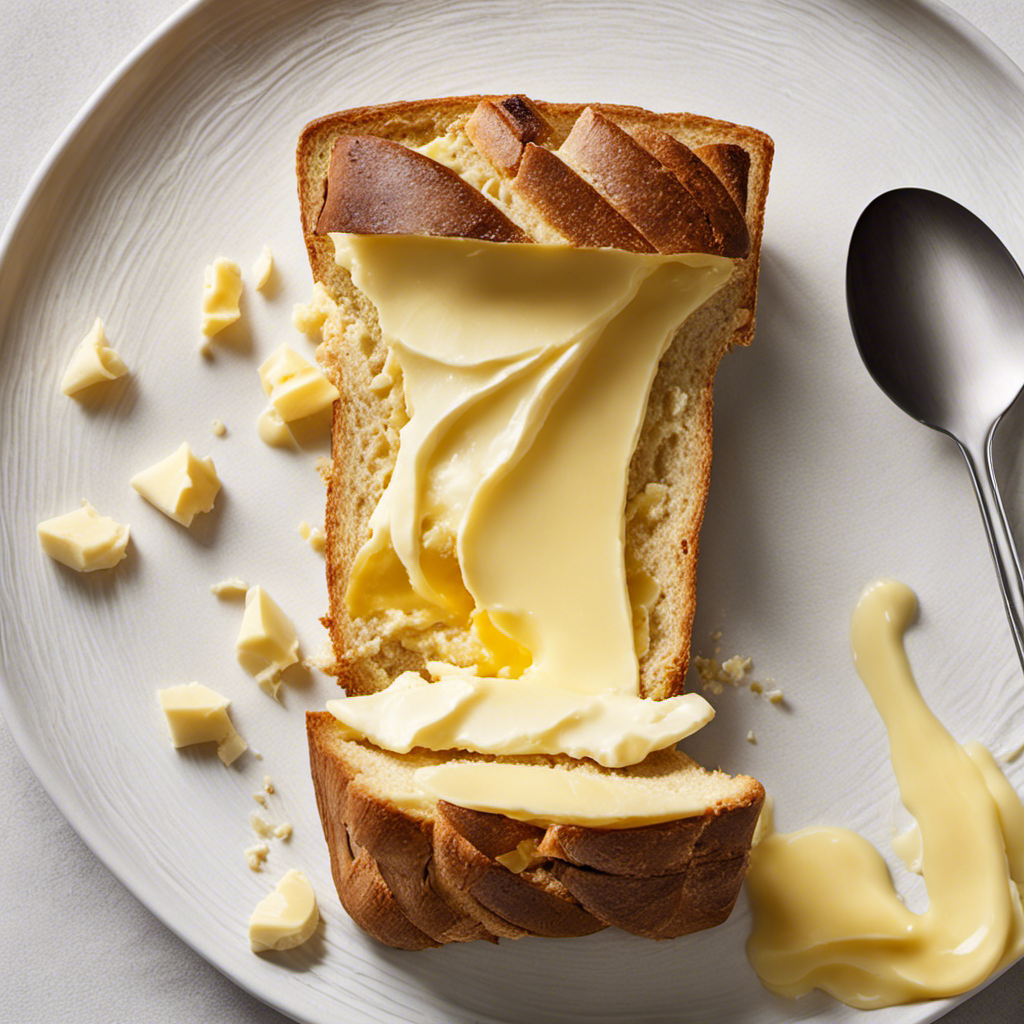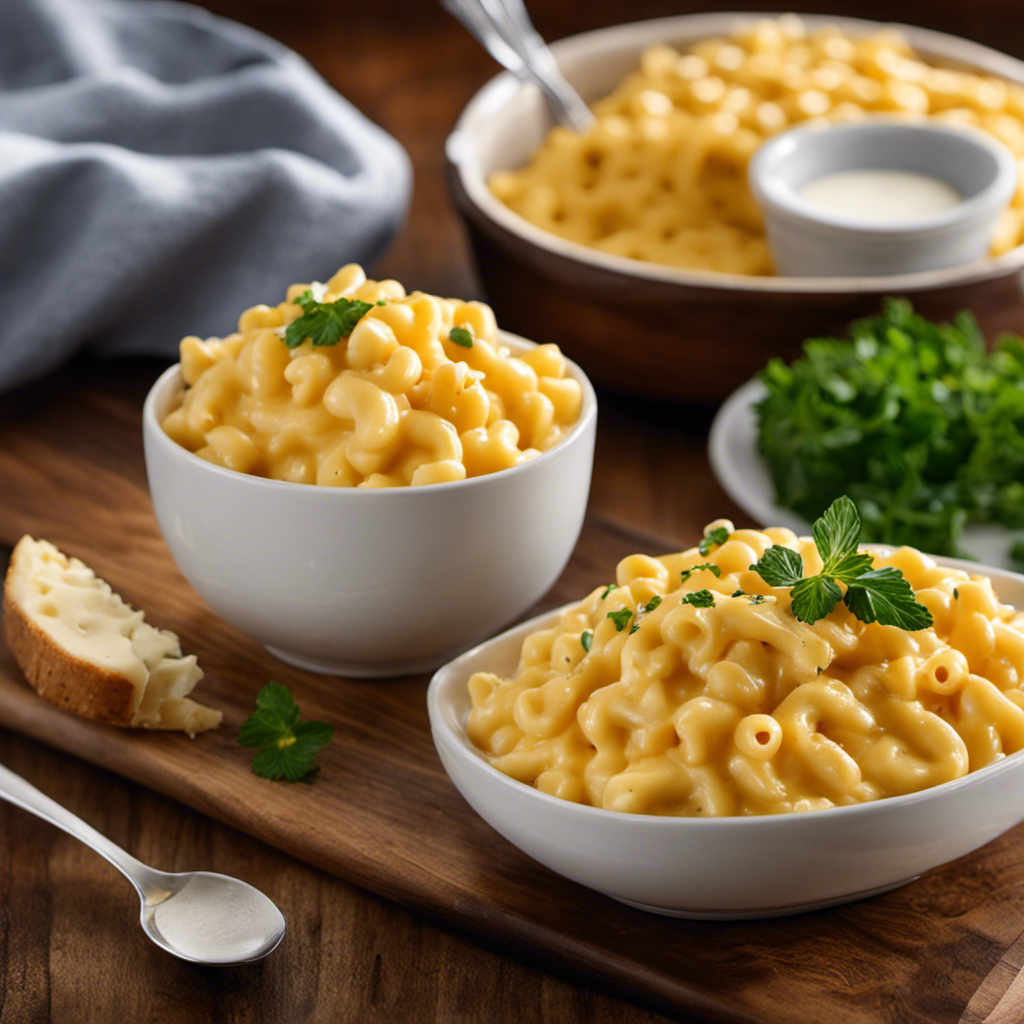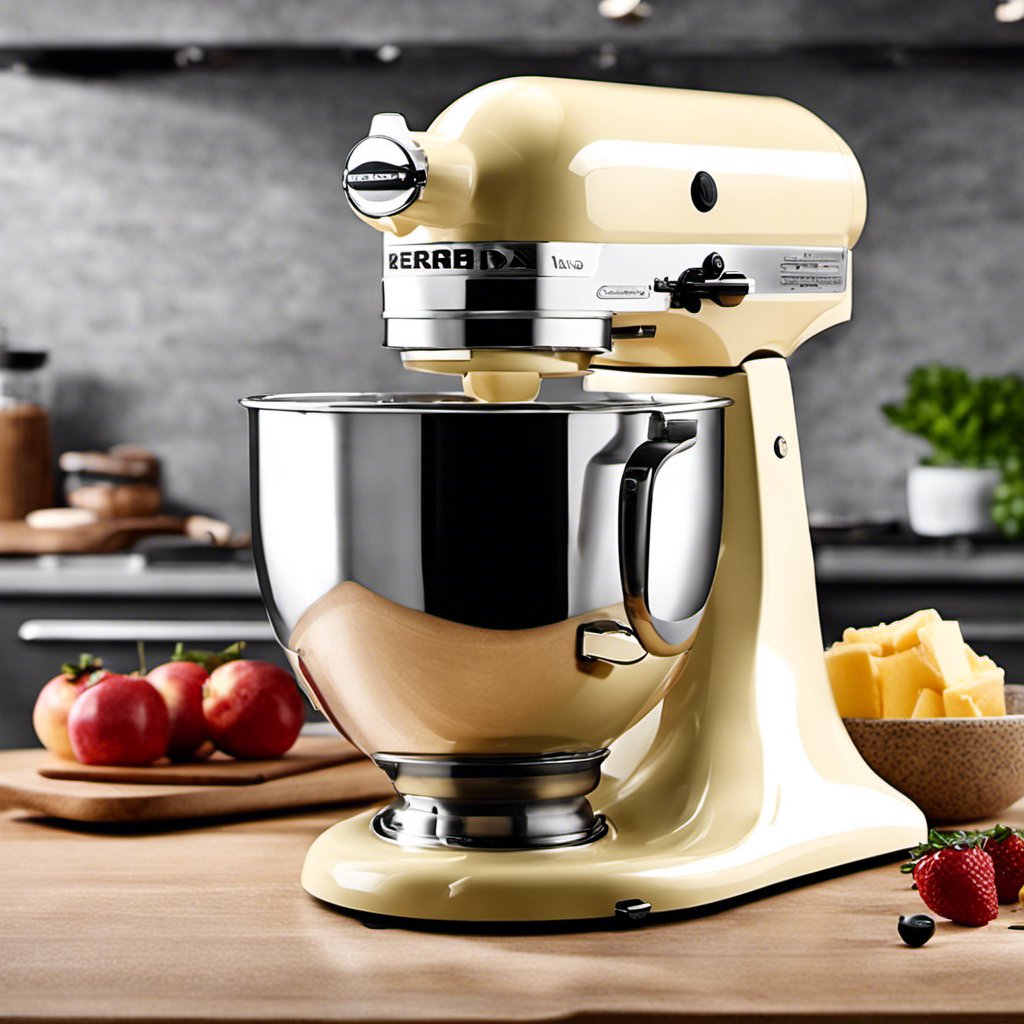Get the most delicious peanut butter cookies by following this ultimate recipe. Preheat oven to 350F. Cream butter, peanut butter, sugars, and vanilla until smooth. Add dry ingredients and mix. Scoop dough onto baking sheet, make a crisscross pattern with fork, then bake. Use real butter and Jiff Peanut Butter for the best taste. Gently handle dough for a soft texture. Achieve ideal flavor and texture by following the baking temperature precisely. For more tips and variation ideas, keep exploring the recipe details and suggestions listed.
Key Takeaways
- Utilize real butter and Jif Peanut Butter for optimal flavor and texture.
- Cream butter, peanut butter, sugars, and vanilla until smooth.
- Follow precise baking temperature of 350F for ideal cookies.
- Handle dough gently for a soft and chewy texture.
- Create uniform balls, space evenly on sheet, flatten with fork.
Recipe Details and Instructions
For making these delightful peanut butter cookies, follow these straightforward instructions.
To create the Best Peanut Butter Cookies, use real butter and Jiff Peanut Butter for that perfect balance of flavor and texture. Start by preheating your oven to the specified temperature in the recipe.
Then, cream together the butter, peanut butter, sugars, and vanilla extract until smooth and fluffy. Gradually add in the dry ingredients as instructed, mixing until just combined. Be careful not to over-mix to maintain the cookies' soft and chewy texture.
Scoop the dough onto a baking sheet lined with parchment paper, spacing them apart to allow for spreading. Use a fork to create that classic crisscross pattern on top of each cookie before baking.
Remember, over-baking can result in dry cookies, so watch them closely and remove from the oven when they're just set. Allow the cookies to cool slightly on the baking sheet before transferring them to a wire rack to cool completely.
Enjoy these ultra peanut buttery treats with a glass of cold milk for the perfect snack or dessert.
Recipe Tips
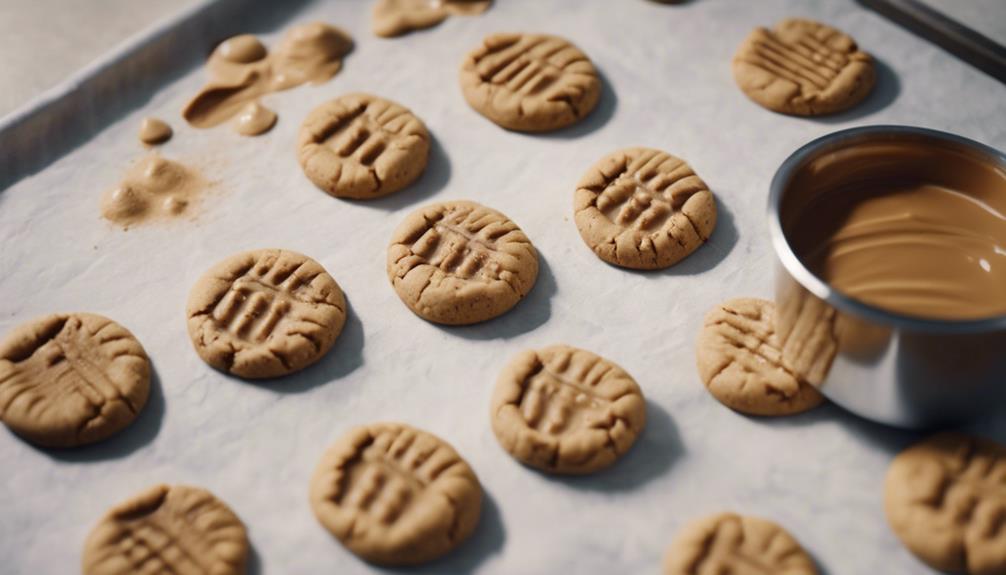
When making peanut butter cookies, remember to follow the specified baking temperature precisely for best results.
Also, handle the dough gently to maintain the cookies' soft and chewy texture.
These simple tips can make a significant difference in the outcome of your delicious peanut butter treats.
Baking Temperature Recommendation
To guarantee your peanut butter cookies turn out perfectly, preheat the oven to 350F as instructed in the recipe. Maintaining a consistent baking temperature is vital to securing your cookies bake evenly. This step is essential for achieving the ideal texture and flavor in your peanut butter cookies. By preheating your oven and keeping the temperature steady throughout the baking process, you help the cookies cook uniformly, resulting in a deliciously uniform outcome.
Properly preheating the oven to the recommended temperature of 350F allows the cookies to bake evenly from the start. Consistency in baking temperature is necessary for the cookies to rise and set properly. It also secures that the cookies are cooked through to the desired level without being underdone or overdone.
Monitoring the oven temperature during the baking process can help you make any necessary adjustments to maintain the ideal environment for your cookies to bake to perfection.
Dough Handling Tips
Properly measuring flour is important for preventing dry, crumbly cookies. To guarantee success, start by accurately measuring your flour using the spoon and level method.
Next, focus on creaming your butter and sugars together until light and fluffy. This step is vital in creating a soft and airy dough that will result in perfectly chewy cookies.
When it comes to shaping the dough, rolling it into uniform balls is key. This not only helps with even baking but also guarantees that all your cookies turn out the same size and shape. Remember to space the dough balls evenly on the baking sheet to prevent them from merging into one giant cookie.
To achieve that classic peanut butter cookie texture, gently flatten each ball with a fork in a crisscross pattern. This not only adds a decorative touch but also helps the cookies bake evenly.
Questions & Replies

Explore the section on questions and replies to find insightful discussions about various aspects of the peanut butter cookies recipe. Users have raised queries about using Kraft peanut butter instead of Jiff, seeking guidance on how this substitution might impact the cookie dough.
Additionally, there are clarifications available on incorporating chopped peanuts into the recipe, offering users a chance to customize their cookies with added texture and flavor.
The section also addresses substitution questions concerning shortening for butter, providing users with alternatives for adjusting the recipe based on personal preferences or dietary restrictions.
Furthermore, users can find detailed discussions on the order of adding peanut butter to the cookie dough, ensuring that each step is executed correctly for best results.
Reviews

In the reviews section, users have praised the ultra peanut buttery taste and perfect sweetness of the cookies, suggesting variations to enhance the flavor profile. Feedback includes using Skippy peanut butter for the recipe and mentions the absence of baking powder in the instructions. Some reviewers recommend adding molasses and peanut butter chips for an extra flavor kick. Sweetness levels are a point of discussion, with suggestions for adjusting the sugar content. Users have also shared their experiments with reducing sugar and adding chopped peanuts for a nuttier taste profile.
| Review Highlights | Feedback | Suggestions |
|---|---|---|
| Ultra peanut buttery taste | Use Skippy peanut butter | Add molasses for flavor |
| Perfect sweetness | Missing baking powder | Include peanut butter chips |
| Adjust sugar levels | ||
| Incorporate chopped peanuts |
Recipe Submitted By
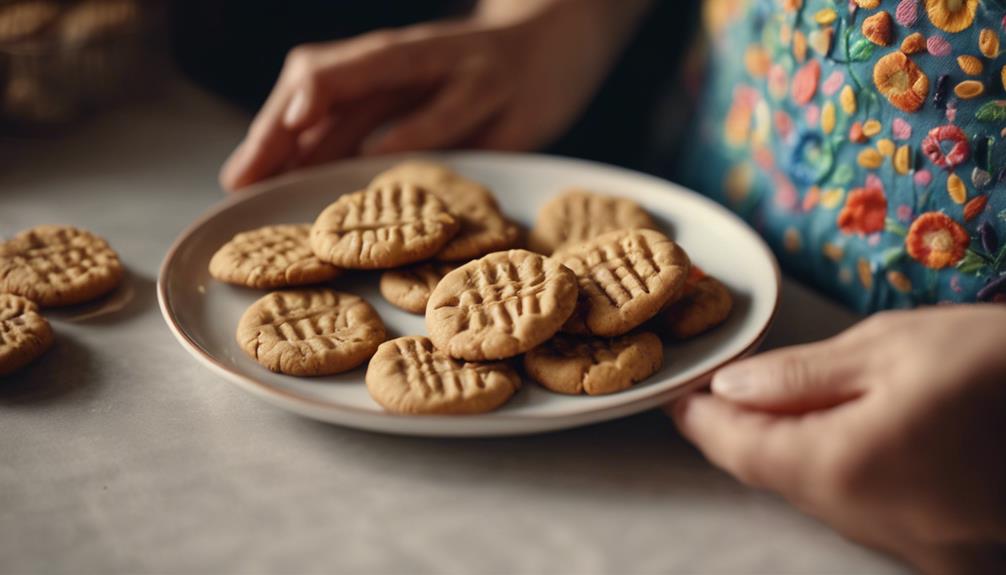
You'll find that user engagement and recipe variations are key points worth exploring when examining the recipe submitted by Gingerbear.
It's interesting to see how Gingerbear interacts with the cooking community and adapts recipes to suit personal preferences.
As you read through the submission, keep an eye out for unique twists and insights that could spark your own culinary experiments.
User Engagement
The peanut butter cookie recipe was contributed by a user known as Gingerbear from the United States. Gingerbear, with 37 followers and 380 recipes on the platform, actively engages with the baking community. Users can find details about Gingerbear's cooking preferences and experiences, showcasing their love for experimenting in the kitchen. This user's passion for baking extends beyond cookies, as they also enjoy creating slow cooker recipes.
Gingerbear's recipe submission not only enriches the platform with a delightful baking option but also fosters user engagement. By sharing their expertise and unique recipes, Gingerbear encourages interaction within the community. Users can learn from Gingerbear's techniques, exchange tips, and even adapt the recipe to suit their preferences.
This type of user engagement enhances the platform's dynamic nature, making it a vibrant space for baking enthusiasts to connect, learn, and grow together. So, next time you bake a batch of peanut butter cookies following Gingerbear's recipe, remember the user engagement that brings the baking community closer.
Recipe Variations
Exploring diverse tastes and textures, the recipe submitted by Gingerbear invites bakers to personalize the peanut butter cookies to their liking. If you enjoy a bit of crunch in your cookies, consider using chunky peanut butter for added texture. Remember to let the butter come to room temperature before mixing it in for a smoother dough consistency.
To inspire your baking experiments, here's a helpful table showcasing some variations you can try with Gingerbear's recipe:
| Variation | Ingredients | Instructions |
|---|---|---|
| Crunchy Surprise | Chunky Peanut Butter | Add ½ cup of chunky peanut butter |
| Soft and Chewy | Room Temperature Butter | Allow 1 cup of butter to reach room temp |
| Nutty Delight | Chopped Peanuts | Mix in ½ cup of chopped peanuts |
| Sweet Sensation | Brown Sugar | Substitute 1 cup of white sugar with brown sugar |
With these options, feel free to experiment and find the perfect peanut butter cookie that suits your taste buds.
Related Recipes and Suggestions
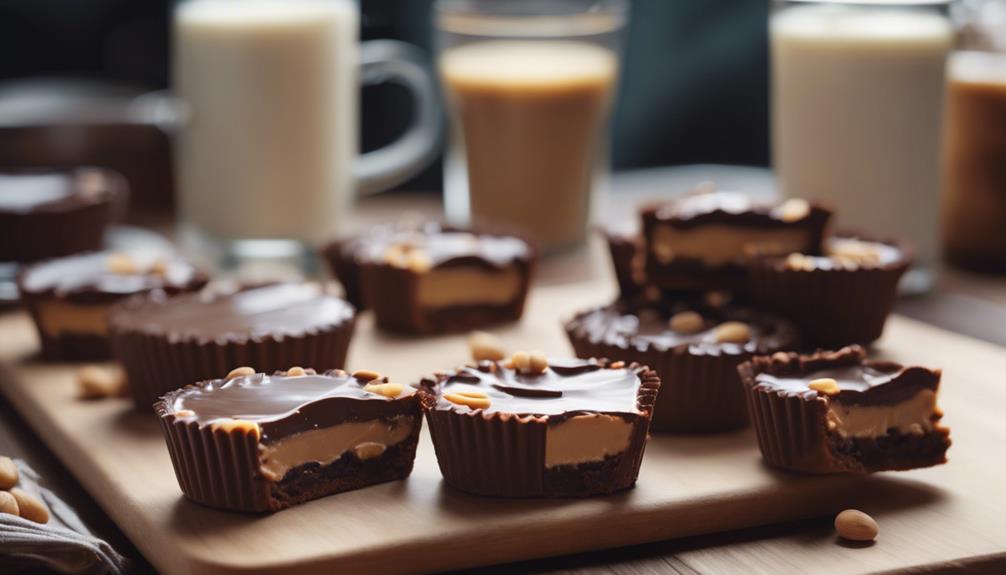
Discovering new cookie recipes can add excitement to your baking routine. If you enjoyed making the peanut butter cookies, you might want to try your hand at Peanut Butter Blossoms, Toffee Almond Sandies, or Buckeyes. These recipes offer a delightful twist on classic flavors and are sure to impress your friends and family.
Peanut Butter Blossoms are a perfect combination of peanut butter and chocolate, with a Hershey's Kiss nestled on top. Toffee Almond Sandies provide a crunchy texture with the sweetness of toffee and the nuttiness of almonds. Buckeyes offer a rich peanut butter center enveloped in smooth chocolate, creating a decadent treat for any occasion.
For those looking to expand their baking horizons, consider trying Peanut Butter Clouds or other similar recipes that complement the peanut butter cookies. These variations won't only enhance your baking skills but also introduce you to new and exciting flavor combinations.
Frequently Asked Questions
What Brand of Peanut Butter Makes the Best Peanut Butter Cookies?
For the best peanut butter cookies, go for Skippy Natural or Jif Peanut Butter. These creamy options offer rich flavor. Remember to mix natural peanut butter well before adding to the dough, and try chunky for added texture!
How to Enhance Peanut Butter Flavor?
Want to intensify that peanut butter taste? Use Skippy Natural creamy peanut butter, extra vanilla extract, and chopped peanuts for a winning combo. Experiment with various brands and adjust sugar levels to achieve the perfect balance.
Why Do You Put Fork Marks in Peanut Butter Cookies?
Pressing fork marks in peanut butter cookies helps flatten the dough for even baking. The crisscross pattern is traditional and adds texture. This step prevents excessive spreading and visually distinguishes them as classic peanut butter cookies.
Why Are My Peanut Butter Cookies Always Hard?
You know what's funny? Your peanut butter cookies are always hard because you're probably baking them a tad too long or using too much flour. Just chill them on the sheet before moving, and consider adding some mix-ins for extra yum!
Conclusion
Indulge in these delectable peanut butter cookies and taste a little slice of heaven.
The perfect blend of sweet and salty, these cookies are sure to satisfy your cravings and leave you wanting more.
Whip up a batch today and treat yourself to a truly delightful experience.
Your taste buds will thank you!
